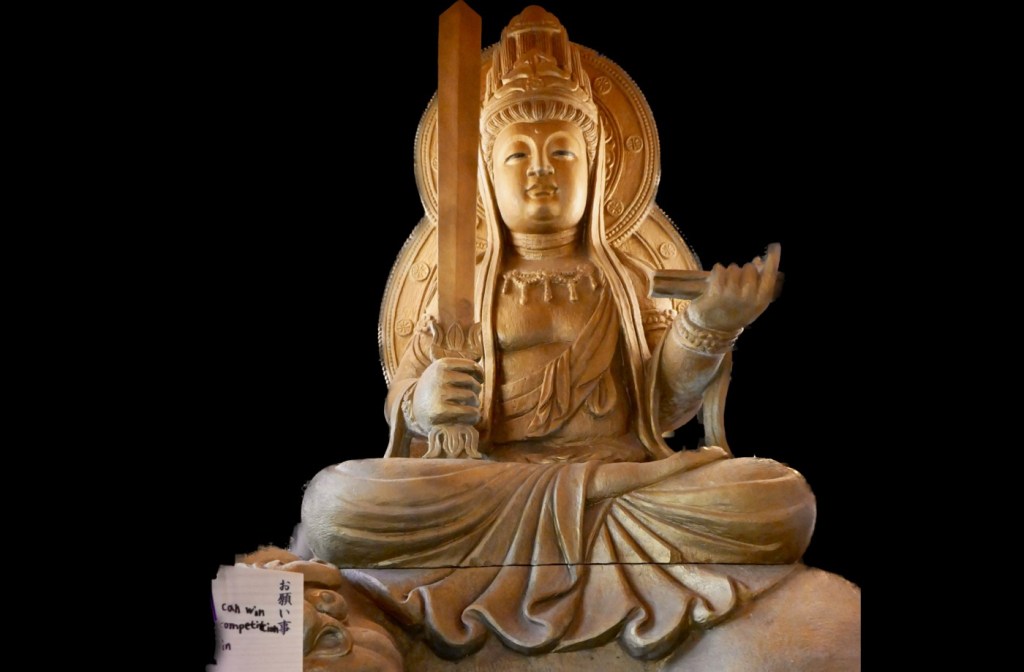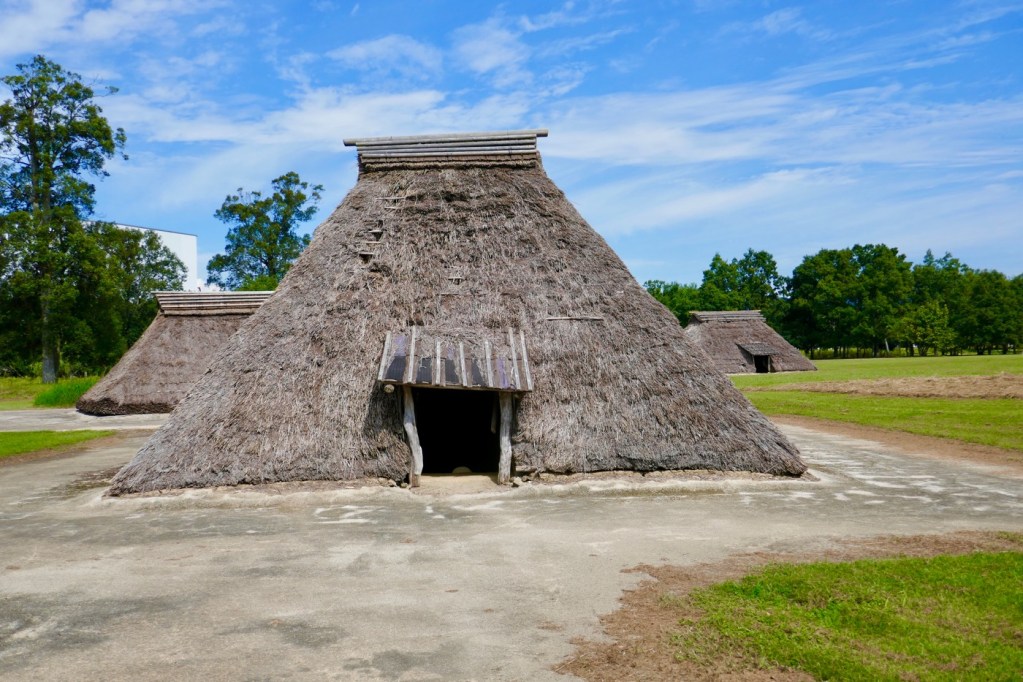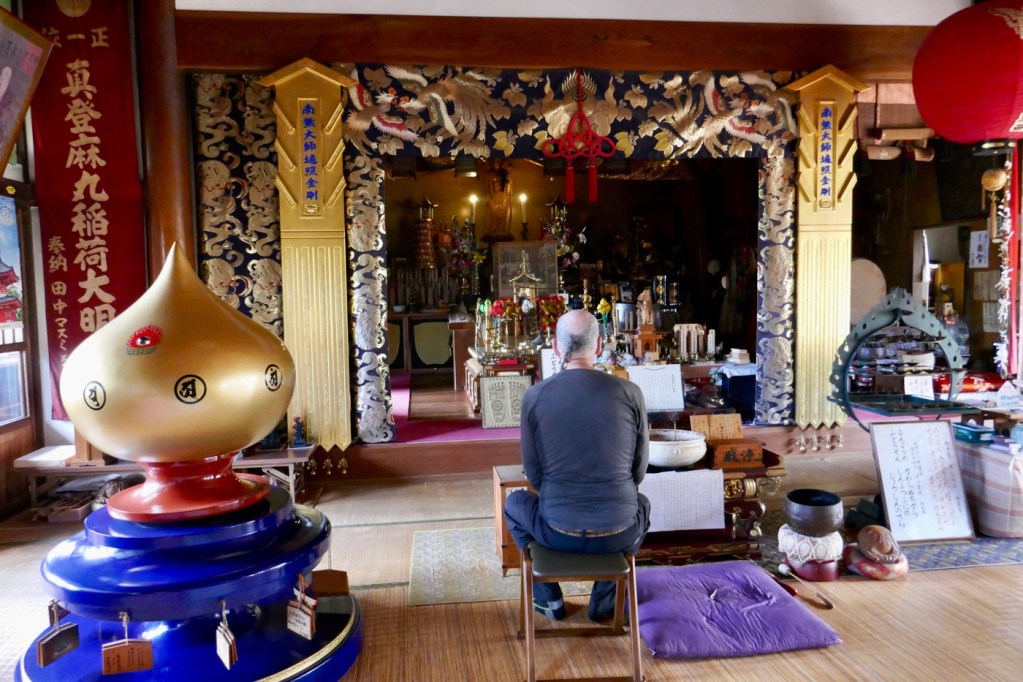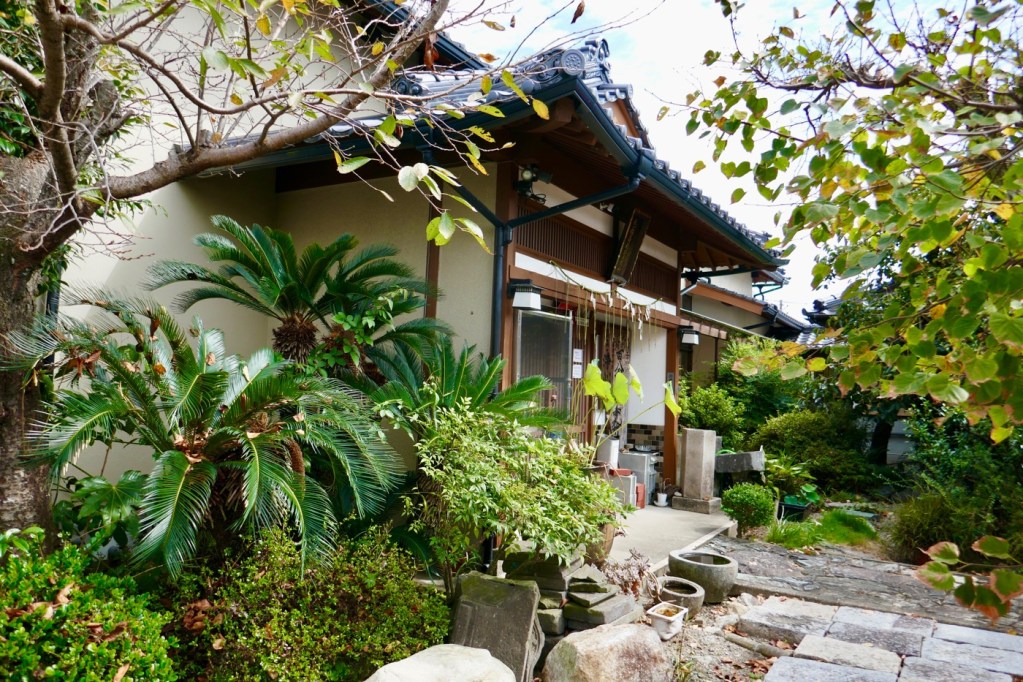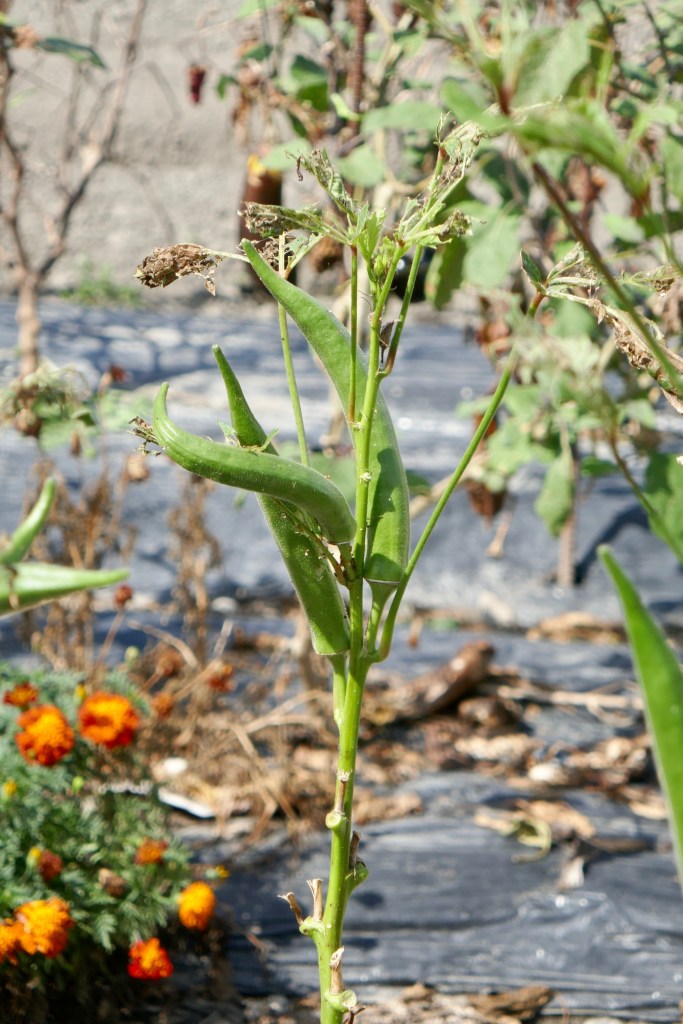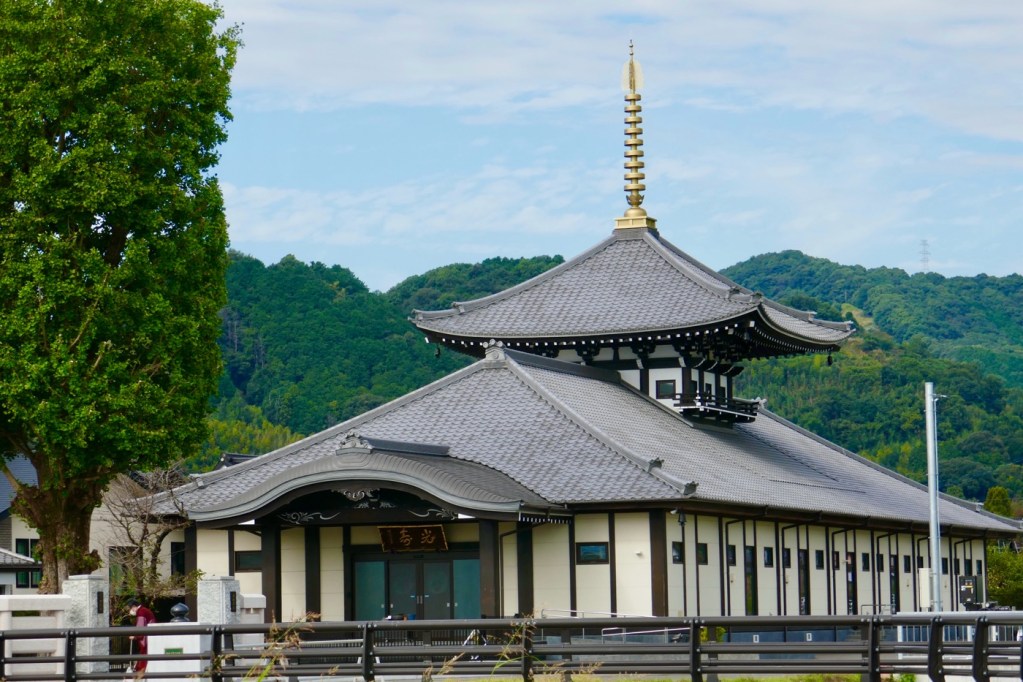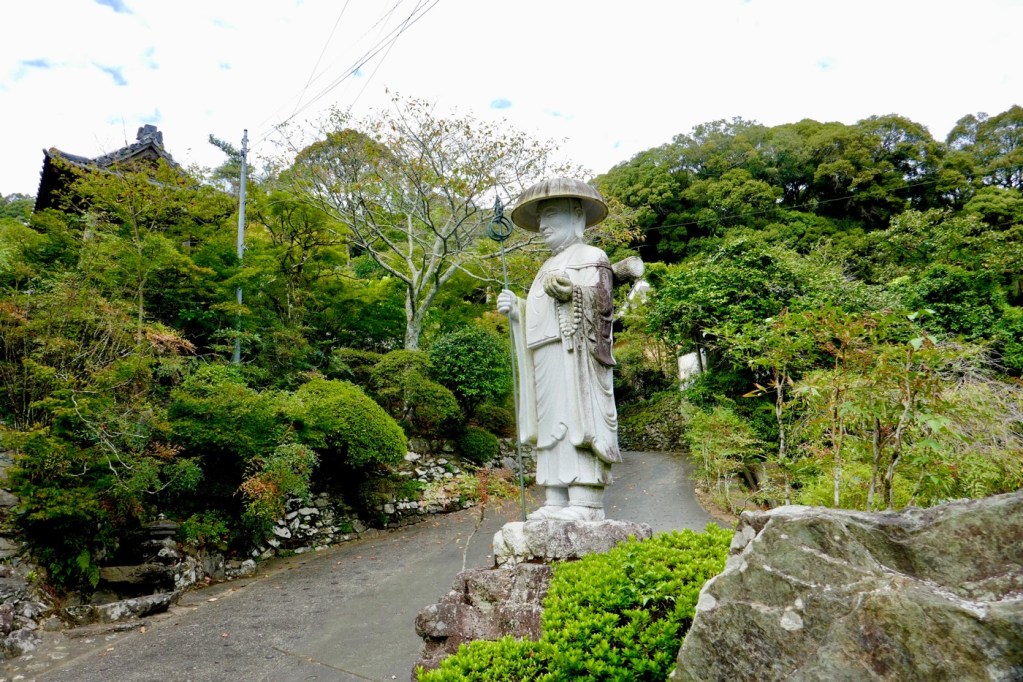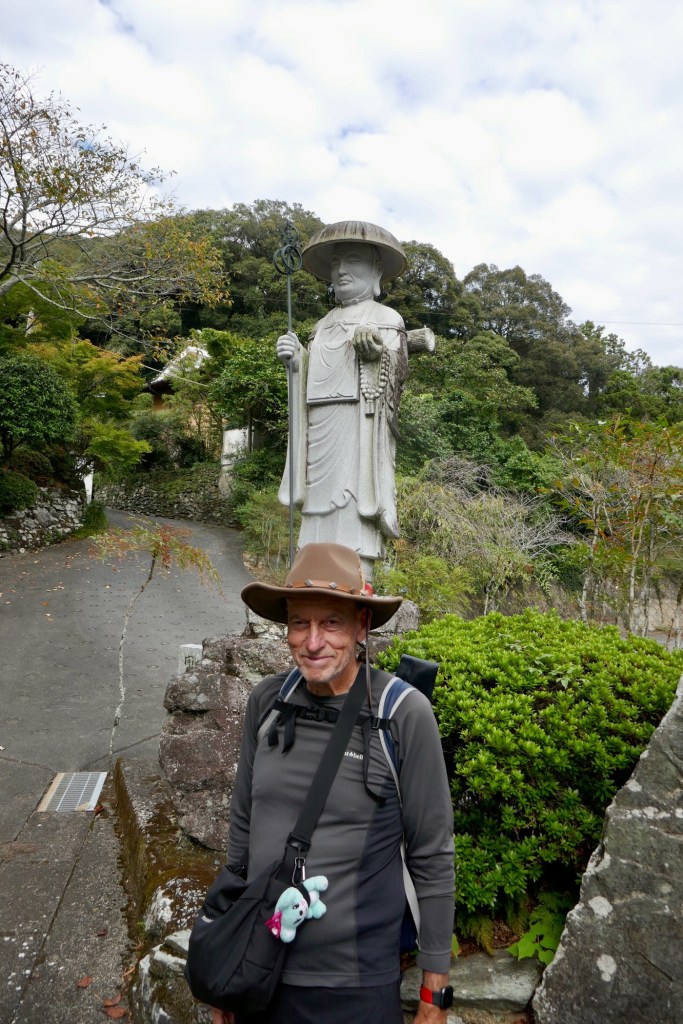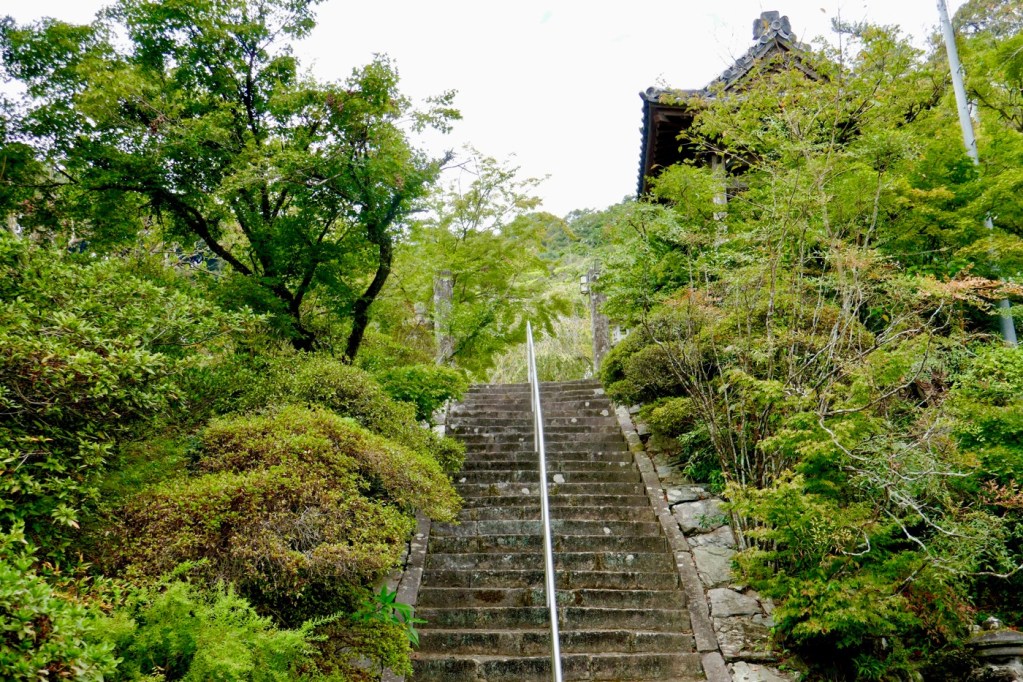Day 10 - Hirazuka, Amagi, Asakura, and a Bit About a Con Man, The Kyushu 108 Temple Pilgrimage, Japan
Day 10 - Hirazuka, Amagi, Asakura, and a Bit About a Con Man, The Kyushu 108 Temple Pilgrimage, Japan
We had a good soak yesterday evening at the hotel’s hot baths, while we did our laundry.
Our room is spacious and bright, comfortable, with stylish Yukatas (light summer kimonos that can be used as pajamas for sleeping) and a choice of pillows that allows you to choose your preferred comfort level.
But it is primarily a business hotel.
In the morning, the majority of the customers were single men dressed for doing business.
Breakfast was good, a cube of cold tofu which you drizzle with soy sauce, grated ginger and chopped scallions, miso soup with mushrooms, steamed rice, a variety of pickles, cooked vegetables and some sweet green juice with a sign that said, “Reduced Pesticides.”
As we ate breakfast, right in front of the window of the hotel’s restaurant, we saw a man on a bicycle, faking an accident with a car.
He was dressed in faded, ill fitting clothing, and it looked like he was living rough.
The thing that astounded me the most, was that just yesterday, as we walked on a particularly boring stretch of the road, we listened to an Audible book on tape called “Breasts and Eggs,” by a Japanese woman named Mieko Kawakami.
She is a great writer, describing her life growing up poor in Osaka, Japan.
One of the characters in her book is a con man who fakes getting injured by cars, in order to get money from the people who supposedly hit him by accident.
And here it was, not a story we read in a book, but the SAME story, enacted in real life right in front of our eyes.
The car stopped and three frightened young men came out, helped the guy to his feet, dusted him off and asked how he was.
He was fine, but probably needed to be checked.
The three men offered to take him to a hospital, but he refused, adding that he is busy now, but if they pay for his checkup with cash money, he will go later.
They quickly pulled out their wallets and put many ¥1000 yen bills in his hands, and he quickly pocketed the cash.
They bowed to him many times and apologized for their “recklessness,” but he wouldn’t let them go, not just yet.
Like other scammers, he didn’t expect to get away with it so easily.
He kept talking and talking while they listened, looking confused.
He kept them there for over ten minutes, while we chewed our food, watching this live documentary.
Their car was blocking one lane in rush hour, but that didn’t make a difference to the con man.
It was a “normal” day of work for him.
He had cycled right into a car, was unhurt and already had the cash money in his pocket, a successful clean job…
Finally he let them go, and again they bowed many times and mumbled many apologies, looking very relieved that they got away with it for such a reasonable amount of money.
No lawsuit, no police checking their insurance and noting this on their driving records. Just an apology and a bit of money, no hassle.
The Buddha said that there are no accidents.
The thing that amazed me the most, was not the fake accident.
I saw the same story in an independent movie once, where a group of boys did this to make some money.
The thing that amazed me the most was that it happened right in front of our window, in the hotel restaurant.
If it happened just one block down or up the road, we wouldn’t have seen it.
If it happened a street over, or just across the same busy street from us, we also wouldn’t have seen it.
But it happened right in front of us, where I could see everything, his mismatched socks, what he carried in the front basket of his bicycle, every expression on the driver’s and his friends’ faces…
What is the lesson here?
Why were we shown this scene?…
I was thinking that we were just observers, instead of interfering with events.
We could have gotten out and told the men that we saw the man waiting for the right opportunity and throwing himself on their car.
We could’ve prevented them from being scammed, but we were like quiet observers, seeing the whole scene unfold without taking any sides.
I even felt sympathy for the aging man, who felt he needed to go to such extreme measures to get some money.
Obviously he didn’t think he had other means to earn money or receive it in other ways.
We were not on the side of justice nor injustice, we simply watched a stone being thrown into the lake, and then we observed the ripples of Karma, expanding out into the Universe in waves.
Along the walk to Temple #90 Joshinin, we stopped to visit the Hirazuka Kawazoe Archeological Park.
This museum depicts everyday life during the Yayoi period.
You can experience “Magatama”- how to make jewelry from stone, how to make fire, bows and arrows, earthenware, bamboo crafts, etc.
There is also a vast recreation of the buildings to show how the people lived at that time.
The Yayoi period started in the late Neolithic period in Japan, (10,000–4,500 BC) and lasted into the Bronze Age, and towards its end crossed into the Iron age.
We had no time to do any museum activities, but it was nice to stroll by the thatched wooden houses in the park, shaded by tall trees.
We arrived at Temple #90 Joshinin, located in a quiet neighborhood.
It is a small temple, and the lady in charge was gardening.
She took off her gardening gloves, wiped the sweat from her face and opened the main hall for us.
We said prayers for ending all wars, in Israel and in the Ukraine, and for healing for all those who suffer.
We repeated those prayers in each temple since then.
As we chanted, she stamped our book and scroll.
It is an old temple, with a shrine that people come to pray for prosperity in business.
The lady chatted with us, politely asking our age.
She said that we don’t just look young, we ARE young in the way we carry ourselves and move.
She gave us cookies and iced tea, and we continued on our way.
We walked to the second temple of the day, through many fields of soybeans, stretching as far as the eye can see.
We passed by a large garden with ripe okra, overripe thin eggplants, rotting red peppers, overripe watermelon and scallions that had yellowed.
I was thinking about the person who had planted this very productive vegetable garden.
What happened to him or her…
Why did they spend so much time planting so many vegetables and attending to them so neatly, only to let it all rot…
Was he or she taken ill and needing to go to the hospital and had nobody that could attend to their big field….
Perhaps the person had died…
The second temple Kotokuin #7 was empty and no cars could be seen in the parking lot.
At least it was unlocked, so we took off our shoes and our daypacks and went into the wide main hall.
There were no stamps to apply ourselves so we started to chant.
When we finished, a priest came with a tray of ice mugi (roasted barely) tea and mini cheese cakes shaped like little birds.
He complemented our chanting and showed us around.
When we left, he gave us gifts of two hand towels, for wiping up sweat during long hot walks, and a bag of cookies.
He had such lovely energies.
We didn’t take any breaks today to eat or to rest.
The walk to the last temple, Nanrinji #6 was my favorite part of the day.
We walked through persimmon orchards, and the trees were so full of ripe persimmons.
It took all my inner discipline not to reach out my hand and pick up a bright orange piece of fruit that looked so tasty.
So many of the fruits fell to the ground, who would miss one ripe persimmon?…
Oh….If only I saw someone working in the orchard….I would have asked for one piece of fruit…. but Buddhism teaches us never to take what is not freely given, so despite my hunger, I kept my hands by my sides and kept on walking.
We arrived at the temple in the late afternoon.
It was up a hill on the lower slopes of a mountain.
It is run by a very hard working couple, and it is kept in perfect condition.
The wife was gardening and she took off her gloves, apologized for her appearance and took our book and scroll to her husband to stamp them.
She told us that she teaches English in the local high school.
She invited us into the main hall and explained about the temple.
The temple was established in the year 805.
The inner shrine holds a Buddha statue that is only shown twice per year.
It is a seated Yakushi Nyori Buddha, the healing Buddha.
The gentle face, robust figure and other features of the statue are typical of the 11th or 12th century, but according to local legend the statue is said to have been carved by the Buddhist monk Saicho, the founder of the Tendai Sect of Japanese Buddhism in the year 804.
Saicho, along with the monk Kukai (founder of the Shingon Sect), joined an embassy party sailing to Tang, China.
When their ship was caught in a storm, Saicho prayed to the gods and Buddhas for help, promising to carve seven Buddha statues and dedicate his life to saving people.
The party safely arrived in China, and returned to Japan the following year, when Saicho was 38 years old.
After returning home, Saicho fulfilled his promise by carving seven Yakushi Nyorai statues out of a sacred tree growing on Mt. Kosho. The statues all disappeared overnight, but one was recovered at Nagafuchi, where Saicho built a temple and named it Nanrin-ji.
The temple was later relocated to its current location.
The Yakushi statue is 69.69 cm tall and it depicts his hair braided in tight spiral curls, slitted eyes and a small mouth, creating a soft, gentle appearance.
The lady and her husband gave us multiple gifts, iced green tea and snacks.
They said that they do get Buddhist people visiting from China, Korea, Taiwan and Thailand, but that they have never seen or met a Western Buddhist visiting their temple.
We have heard this a few times in previous temples we visited on this pilgrimage, that we are not only the only walking pilgrims they have met, but also the only westerners who are doing the Kyushu 108.
I was hungry and dizzy when we made our way to the bus that will take us back to our hotel.
Despite being tired, we ran the last two kilometers in order to make it on time.
Following Google maps’ timetable, I mistakenly got on the wrong bus going in the opposite direction.
We had to get off and take the bus in the right direction, towards Kurume.
It was a very long bus ride during rush hour, at the end of the day.
I saw a boy watching porn, hidden inside a manga (cartoon) comics, which he watched on his phone.
I offered my seat to an elderly lady who had just given her seat to a blind boy, but she refused to sit, saying she was still young.
I said that I was also still young, but she grabbed my arm in an iron grip and forced me to sit down.
This made the passengers on the bus laugh, two old ladies arguing who was still young and who should take the seat.
We got to Nishitetsu Kurume station and sat in the Starbucks for awhile, drinking tea and collecting my notes and thoughts.
It takes so much planning each day to choose our route, and to make sure that we get to the temples before closing time.
Each day we need to have a realistic plan, that will allow us to get back to our accommodation at the end of the day, because in some parts of rural Japan, the bus stops running at 4 pm or runs only twice per day, once in the morning and once in the evening.
We went for dinner at Sushiro conveyer belt restaurant, because it was quick and simple and we wanted to do our laundry and take a soak in the hot baths.
We are finishing every day so late in the evening, that I barely have time to get organized.
Sending you love and blessings,
Tali
Stats: 28,842 steps
Today’s walk: 19.5 km
Kilometers walked to date: 188
Temples visited:
Temple #90 Joshinin
Temple #7 Kotokuin
Temple #6 Nanrinji

